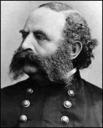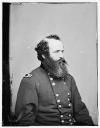OK, I’ve got diarrhea of the fingers and am not doing a very good job organizing my thoughts, so this one might ramble a bit. Bear with me – tonight’s topic is book reviews.
I think I’ve said it before: I don’t relish writing book reviews. I’m much more comfortable commenting on certain aspects of books I’ve read, well aware that I’m just a guy, like most of you, and my assessment of the overall worth of the fruit of someone’s labor should carry no more weight than that of anyone else.
One of my many pet peeves is reviews written by individuals who “specialize” in some event or person that plays a relatively small part in the larger work being critiqued. You know what I’m talking about: some fella who has studied the Battle of Raymond’s Bluff for 35 years notes that, in the coverage of that engagement in a work focused on water borne supply issues in the Peninsula Campaign, the author got the name of the Lt. Colonel of the 325th Rhode Island Infantry wrong (it was Joseph Smith, not Albert Smith), and hey, if he got THAT wrong, what else did he get wrong? So I pledge from here on out that if I read in a larger or loosely related work something about First Bull Run with which I disagree, I will not make inferences about the rest of the book based on that disagreement. But with the first review in question, this won’t be a factor.
I’m getting ready for my first trip to Shiloh. I’ll be joining four fellow members of an online discussion group at Corinth on Thursday, and we’ll tour the field on Friday and Saturday. I’m looking forward to the trip and seeing old friends, though I’m a little nervous about the expected 96 degree temperatures. In preparation, I’ve read most of the standard works, including Force’s From Fort Henry to Corinth, Sword’s Shiloh: Bloody April, McDonough’s Shiloh: In Hell before Night, and Daniel’s Shiloh: The Battle that Changed the Civil War. I’ve just finished reading a new publication (though not a new manuscript) by O. E. Cunningham, Shiloh and the Western Campaign of 1862.
 I was surprised to find that my book had two copies of page 331, and no page 330. Ted Savas of Savas-Beatie, the publishers of the late Dr. Cunningham’s book, is a fellow member of Dick Weeks’s Civil War Western Theater Discussion Group, so I posted a message on that forum asking Mr. Savas if there was any way to get an electronic copy of the wayward page 330. Mr. Savas explained that only a limited number of these misprinted books made it into the hands of consumers, and that the company would replace them with corrected volumes if that’s what folks wanted. He also offered to send a pdf file of page 330 if that was preferred. That’s the option I chose, anticipating that my rare misprint edition will one day be worth millions. Perhaps billions, like that Billy Ripken card with the cuss word on the bat.
I was surprised to find that my book had two copies of page 331, and no page 330. Ted Savas of Savas-Beatie, the publishers of the late Dr. Cunningham’s book, is a fellow member of Dick Weeks’s Civil War Western Theater Discussion Group, so I posted a message on that forum asking Mr. Savas if there was any way to get an electronic copy of the wayward page 330. Mr. Savas explained that only a limited number of these misprinted books made it into the hands of consumers, and that the company would replace them with corrected volumes if that’s what folks wanted. He also offered to send a pdf file of page 330 if that was preferred. That’s the option I chose, anticipating that my rare misprint edition will one day be worth millions. Perhaps billions, like that Billy Ripken card with the cuss word on the bat.
Anyway, during the course of our correspondence, Mr. Savas asked if I would be willing to post a review of the Cunningham book on Amazon.com. I replied that I preferred not to post reviews to Amazon, but that I would be happy to talk about the book here at Bull Runnings. So, here goes.
I won’t bother you with the by now well-known details of the publication of this work, but this manuscript was written in 1966 as Cunningham’s doctoral dissertation. For whatever reasons, the work went unpublished for 40 years, although it has been referred to extensively, primarily by NPS historians, during that time. (One of the two editors of the book, Timothy B. Smith, was a long time ranger at Shiloh who now teaches at UT-Martin; Gary D. Joiner is a history teacher at LSU ) So, after years of folks “in the know” saying “someone should publish this thing”, someone finally has.
The book has a lot of things going for it. First and foremost, it is very easy to read. From what I understand, this is uncharacteristic of dissertations. The style is friendly, not too stilted, and since it was written prior to the current academy requirement that ACW studies focus on sociological aspects, this is an old fashioned, meat and potatoes campaign study. The action is clearly explained, and the notes (real live footnotes, praise the Lord!), particularly those of the editors, are informative. And the narrative also puts the battle into context by covering events leading up to and following it.
To me, the next most important feature of this book is its relative lack of sensationalism. Most campaign studies focus on some event or isolated series of events as the “sole reason” for victory or defeat; a moment or action where, if things had gone differently, everything would have changed. Shiloh historiography, as the editors explain, has variously featured such events as critical: first it was the Union defense of the Hornet’s Nest sector; then it was the death of Albert Sydney Johnston; and most recently, the Confederate loss has been attributed to a general lack of knowledge of the enemy positions and lay of the land. This is the school of thought promoted by Cunningham. That’s decidedly unsexy, as I think tend to be the real reasons things turn out the way they do. For instance, in my opinion the outcome of First Bull Run was more a function of the advantages attendant to the defense of favorable ground than to any of the myriad other reasons put forth over the years.
So we’ve got a lively, clear narrative that is realistic in its analysis. Of course, there must be drawbacks.
I wasn’t happy with the maps. Even though there are about 30 maps in the book, I think they should have been more numerous in the beginning phases, and should have been presented with the same level of detail as the narrative. But then, I’m almost never happy with maps.
The author wore his sympathies on his sleeve. He was apparently enamored with most things Confederate, though not to the degree that it affected his analysis. I found it disturbing that he unabashedly, and unqualifiedly, referred to panicked Federal troops, seeking shelter at Pittsburg Landing or trying to board river transports, as “cowards”. His style is at times a little clumsy: for instance, he habitually lists the makeup of brigades with regiment identification and commanders’ names for the entire brigade, a little too much information which is forgotten by the time the paragraph is finished. When the colonels were mentioned in the text later, I invariably had to go back to the “brigade” paragraph to figure out what regiments they were with.
I also thought that the editors, one of whom (Smith) has written extensively on the battle and battlefield, should have gone into a little more depth in their notes when they disagreed with the author’s findings. While clearly stating when and how Cunningham was at odds with Sword, McDonough, and Daniel, when it came to variances with their own work they typically simply referred the reader to that work. I don’t know if the motive was modesty or book sales, but I found the practice distracting.
Shiloh and the Western Campaign of 1862 is a much needed addition to the literature of the campaign. While I don’t think “the best” single volume has yet been written, I do think you’ll have a better grasp of the battle after reading this book than you had before. And in the end, that’s what it’s all about.




























Recent Comments